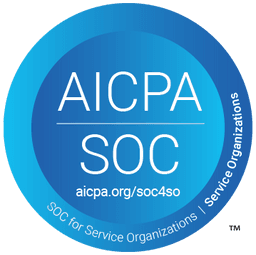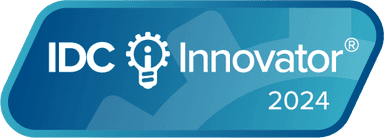Pricing StrategyJan 19, 2023
3 ways to maximize customer retention with your SaaS pricing strategy
Want to boost customer retention for your SaaS business? Check out our article that provides an overview of 3 pricing approaches. While not exhaustive, it is a great starting point to unleash your creative pricing potential and keep your business flourishing.
To drive growth and thrive through even the most difficult economical landscapes, every SaaS business has to build the right pricing strategy (and continually update it to meet the moment). Pricing innovations by SaaS companies are typically associated with new customer acquisition – “get the first month free”, etc. – but pricing can also be a powerful lever for driving customer retention, an important factor in any SaaS success story, but especially when faced with a downturn.
SaaS pricing approaches to maximize retention
In this article, we’ll give an overview of three approaches to pricing that SaaS businesses can use to maximize retention. This is by no means an exhaustive list, but can be a good starting point to get the creative pricing juices flowing.
1) Use pricing mechanics that reward consumption and tenure
Firstly, utilize pricing mechanics that deliver benefits to customers for high consumption and ‘length of stay’. Examples of these pricing approaches include:
- Volume discounts – Reward customers who use more of your product with declining marginal costs of use
- Commitments – Reward commitments to a longer contract period with discounts
- Loyalty schemes – Reward loyal customers, i.e. discounts that grow with customer tenure
- Seasonal discounts – If your product has strong seasonality, offer discounts at certain times of the year to avoid reconsideration
This is the most obvious of the pricing approaches that maximize retention because each one is a tangible reward for customers who are more committed to you – in the form of lower marginal costs, certainty around what they’ll pay, or special savings they may not have expected. Each one is also increasingly relevant during a time of high churn and budget cutting, so enabling your Sales teams to utilize these pricing mechanics can have a significant impact.
2) Set your public pricing at the right level
Secondly, boost retention by ensuring your standard public pricing is set at the right level (easier said than done, we know). There is a trade-off between margin and retention here, and broadly your objective is to maximize the aggregate customer lifetime value (CLV).
Getting pricing right is more science than art. Developing pricing is rooted in data: both with research before launch (e.g. conjoint analysis, etc.) and the observation and iteration afterwards.
The reality for many small companies is that they can’t afford significant pre-launch research.
In these circumstances, the key is to be agile – put something out there based on whatever you have (even if it’s mostly hunch), see what sticks, and iterate quickly. The good news is that services like m3ter are available to capture key data sets (usage, cost, and margin) and make this process data-driven.
Note that pricing experts are split on the topic of transparent pricing – i.e. including pricing information publicly on your website. You can find countless arguments for both sides, but whatever you choose, you’ll need to do some testing to find the right strategy.
Kyle Poyar of OpenView Venture Partners had a good guide to price testing in his Growth Unhinged newsletter. Check it out here.
3) Use private pricing for larger customers
Finally, have a ‘Contact Us’ tier in your public pricing. Although there are arguments for both sides (as mentioned above), the majority of SaaS businesses have at least some pricing transparency these days. And, there are upsides to at least having private pricing for larger customers (i.e. above a certain tier of spend/ usage or company size).
The gist is that private pricing effectively allows you to price discriminate. Leaders in the SaaS space have been discussing this for a long time. In 2018, Jason Lemkin from SaaStr said the following:
Your ACV doesn’t have to be at these levels to trigger private pricing. What you’re looking for are situations where some customers have potential value that is significantly higher than the median customer. Keeping pricing private for them allows your sales team to negotiate directly and build a custom package that’s right for their company and yours, without disrupting your wider customer base.
What ‘retention’ really means, and the size of the prize
Before we finish, it’s worth digging further into what we mean by ‘retention’.
The core metric you should be targeting is net revenue retention, or NRR – the aggregate revenue growth/contraction over time for a given cohort of customers. NRR is the single most important metric for a SaaS business because it indicates both the growth and stability of a company’s revenue stream -- and those are the two biggest drivers of any company’s valuation. If NRR is strongly positive, the valuation impact can be extreme.
NRR has two component parts: how effectively you retain customers (gross retention) and how effectively you sell more to them (expansion).
This was explored in-depth by Todd Gardner, a thought leader in SaaS valuations, in a popular guest post on the m3ter blog (“Usage-based pricing is the best way to drive Net Revenue Retention”). He found that the greatest potential to drive NRR is in the second component - expansion. The implication being that pricing to improve retention should, counter-intuitively, focus mostly on encouraging greater spend by existing customers!
To read more on the connection between retention and valuation, be sure to check out both of Todd’s posts on the topic:
- Usage-based pricing is the best way to drive Net Revenue Retention
- The impact of Net Revenue Retention on SaaS company valuations
Have other ideas of pricing approaches to maximize customer retention? Let us know in the comments or on social media.
You might also like…
Find out how your business can automate usage-based pricing today
See a demo, get answers to your questions, and learn our best practices.
Schedule a demo


